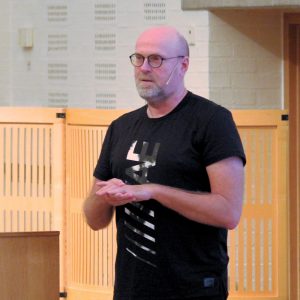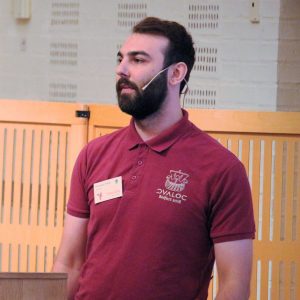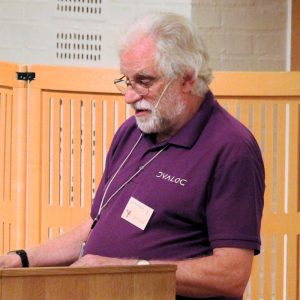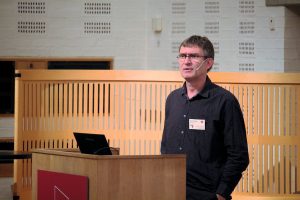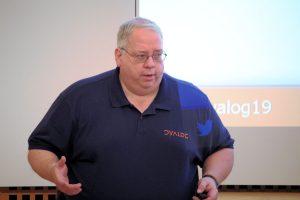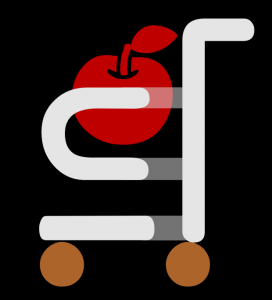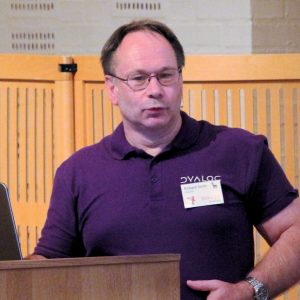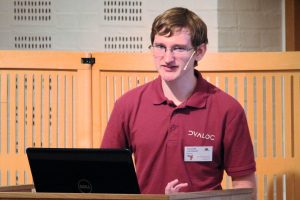Week 7 features talks by two recent additions to the Dyalog team. Richard Park joined Dyalog a year ago, and his primary focus is the production of new teaching materials. Nathan Rogers is the newest member of our US consulting team and is based in Denver, Colorado.
Jupyter notebooks have recently become a very popular mechanism for publishing scientific and technical content. In addition to nicely formatted text and graphics, notebooks can contain executable expressions in a growing collection of programming languages – including Dyalog APL. In his talk at Dyalog ’19, Richard shows that it has become really easy to get started with notebooks containing executable APL code. Thanks to recent work that he has done, you can even get started without installing anything on your own machine!
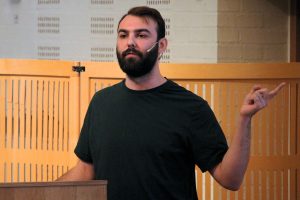
Richard Park shows a new way to access Jupyter documents
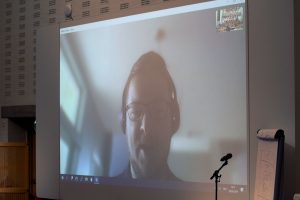
Nathan Rogers presents APL2XL from the other side of the ocean
Excel workbooks are nothing new; the first version of Microsoft Excel appeared in 1987, only 4 years after the release of Dyalog version 1.0. For decades, users have used OLE Automation to interact with Excel and create workbooks. However, this is not a suitable technology for use on servers (even Windows-based servers). Nathan could not attend Dyalog ’19 in person due to a theatre production in Denver where he was a member of a team dancing tango, so he had to present his APL2XL project via a remote connection. The goal of this open source project is to create Excel workbooks (.xlsx files) under Windows, Linux and macOS, without any external requirements other than Microsoft .NET compression libraries.
Summary of this week’s videos:


 Follow
Follow